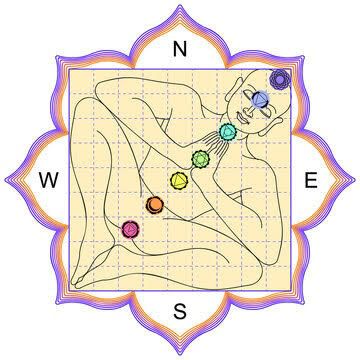Vedic (Structural) Vastu
The designs are intended to integrate architecture with nature, the relative functions of various parts of the structure, and ancient beliefs utilising geometric patterns (yantra), symmetry and directional alignments.
In Indian Vastu shastra, which is a traditional Hindu system of architecture, various methods were suggested with regard to the positioning of doors and windows, positioning of various rooms and their location with respect to the purpose of utilisation as well as shapes and location of plots and buildings. Toilets were not a part of the house; they were positioned away from the house etc.


Structural architecture is the part of Vastu Shastra that focuses on the design, shape, and space of a building or any structure. This helps ensure that the structure is balanced with natural energies. Here are some of the main aspects:
- Nature's Compass: Vedic Vastu loves the cardinal directions - north, south, east, and west. For example, the direction your front door faces, or where you sleep, can make a difference in the energy flow of your home.
- Five Elements: Everything, according to Vedic thought, is made of five elements: earth, water, fire, air, and space. Vedic Vastu ensures that a balance of these elements is maintained in a building for harmony and well-being. It's like making sure you have the right ingredients in a recipe.
- Doors and Windows: Their location and direction can affect the positive energy entering life.
- Land Selection: To determine the land size, shape and inclination to allow the positive energy flow.
- Shape of the house: Square, rectangular or other spaces can affect the flow of energy
- Position of rooms: The position of particular rooms, such as the pooja/prayer room, bedroom, kitchen, etc and their direction can have an impact on the quality of life.
- Roof design: The height, shape of the roof and selection of appropriate material so it can play a role in energy balance.
- Ventilation: Appropriate ventilation is required to ensure entry of natural air and light.
- Toilet: In ancient constructions there were no toilets in the residential or workplaces as they were located away from residential and workplaces. The presence of toilets in the residential or workplaces depletes and drains the positive energy from that particular place and direction in that area.
The main objective of Structural Vastu is to design a structure that is balanced with the ecosystem, traditional values and modern lifestyle.

